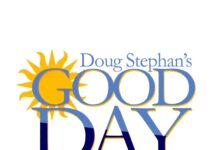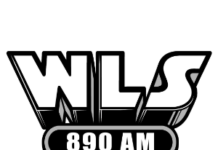
| (By Gary Berkowitz) Some programmers think that we’ve lost traffic and weather to our phones. I disagree. It still has a place on radio, especially if you believe that local counts.
Doing traffic and weather may seem simple, but it’s easy for both of these services to become “wallpaper” or just be done the wrong way. Since most radio stations do both of these daily, check out these tips and instantly see how great they sound on your station. Your listeners will appreciate it too! TRAFFIC GIVE ME THE TRAFFIC REPORT, PLEASE. Nothing annoys listeners more than hearing the traffic intro and then the jock goes off on a tangent, talking about everything but the traffic. When the intro hits, get directly to the report. Save the “schmooze” for other places. WHAT DID THEY SAY? Have your traffic reporters developed their own language? Make sure they speak with easy-to-understand words. At the news station here in Detroit, they always refer to 75 as “The Chrysler.” Problem is, nobody calls it that. People call it 75. Traffic reporters are the only ones who use that name. SLOW DOWN. Many traffic reporters speak so fast to include everything that you end up hearing nothing. THEN WHY DID THEY DO THE REPORT? Avoid “Nothing is going on.” If that is the case, why are we doing a report? Avoid this “traffic reporter crutch”: “Things are winding down.” What does that mean? BETTER TSL. Avoid using traffic reports as a tease unless you are going to cite a specific problem. “There’s a problem on 95 South by Salty’s billboard at exit 56. We’ll tell you why next on 92 PRO-FM.” RATINGS HINT: Get credit by attaching your call letters to traffic reports. Avoid “We’ll check traffic next.” Better: “We’ll check Lite 101.9 traffic next” WEATHER ONE-PUNCH JINGLES SOUND BETTER. Two-punch weather jingles never sound as good as one-punch versions. Have a longer emergency bed only for use on bad weather days when necessary. ELIMINATE “PARTLY TO MOSTLY CLOUDY WITH HIGHS IN THE MID TO UPPER 60s.” Use fewer words. Eliminate the use of words such as Highs, lows. Do the weather format the same, all the time. This is a great one from Don Kelley when he was PD at Magic 106.7 in Boston. Example: Sunny Today, 78 Clear Tonight, 66 C’MON, I NEED TO KNOW HOW TO DRESS. Like with traffic, once the jingle hits, get to the weather. This is not schmooze time. Now that we’re into Fall, how about “What to Wear Weather.” or “School Day Weather.” RATINGS HINT WITH WEATHER: When doing weather back to music, make sure your format includes a strong station benefit. Example:”Sunny and 89 with another 30 minutes of ‘Today’s best music’ starting now” TV PEOPLE ARE GOOD FOR YOU. Have a relationship with a TV station and its meteorologist in AM Drive. Use their name on weather reports throughout the day. Make sure they do not get too technical and involved. Keep it fun, simple, and concise (TV weather people are notorious for going too long). Once you get these on your station, let me know how it’s working for you. |
Gary Berkowitz is President of Detroit-based Berkowitz Broadcast Consulting, specializing in ratings improvement for AC radio stations. Contact Gary at (248) 737-3727 or [email protected] – www.garyberk.com






Terrible idea to say Sunny today, 68. Don’t make the listener decode what you’re saying. Add the word “high’s”. It takes a fraction of a second and uses the english language, not shorthand that the listener has to figure out. /// You do the traffic report when there’s nothing to report so that the listener knows your paying attention to the traffic, not ignoring it because the traffic guy is asleep. /// Don’t tease important information. Nothing pisses off a listener more than having to wait for vital information, especially if they’re at a decision point on which route to take or send the kids out the door with the school bus coming.
When weather and traffic are treated only as “services”, the opportunities to disengage with audiences are pervasive, particularly those who are a,) Nowhere near the areas that are affected by traffic at any given time or, b.) Will not be going outside for some hours.
Radio would be wise to accept reporting on traffic and weather as “presentation opportunities” – and no more. Anything else becomes no less than more in a series of tune-out factors.
As to doing ALL the traffic: Avoid that at all costs.
Remember: Providing these elements only gives the ILLUSION that the station is totally involved. They never are. Nor can they be.
Good points Ronald. . . . here’s what’s in a traffic report I heard this morning…
“The south side of the (freeway).”
“two car collision”
“surface street accident”
“traffic diversions in place” (it took an additional 10 seconds to pinpoint the problem).
Not that 10 seconds is a long time . . .but add it up. Add up how many times a reporter says “The north side of I 290”. . instead of “northbound 290” . . this isn’t a condemnation of traffic reporters…but a plea to talk like humans do. A well planned interaction with a traffic reporter will make sense to the listener. A detached report full of “traffic reporter” phrases won’t. Having that additional voice – a real plus..as long as it adds to the listener’s experience. There are other stations that promote traffic every 10 minutes – and they spend 60-90 seconds each time doing ALL of the traffic. WAZE, Google Maps, and other traffic apps will help. Hearing real people on the radio talking about real problems in real terms? Priceless.
So – you hear a traffic report full of words like “collision” “vehicle” “incident” – “failed to negotiate a curve” – traffic reporters these days are apparently taught to read like you’d read a menu at a fast food restaurant. Radio does its best when it paints a picture. Traffic reporters can be personalities too. Gary hits that nail on the head- try not to use “reporter” terms. Use terms we can all relate to.. “smashup”, “crash”, “semi”- and before you crack that mic, picture in your head what the driver listening to the report is feeling. If you do this with enough planning and forethought even the drivers on the west side will appreciate hearing a problem on the east side. Add some color, some fun phrasing if possible (owing to the situation). John’s suggestion to add ALL of the traffic could he a problem in the larger cities. We’ve had situations where we couldn’t fit it all in-and had to tease the next report. Our traffic reporter was in a helicopter and she would tell ’em “we’re headed up to (town) to check (highway)-it’s coming up at (time). For the weather-don’t be a meteorologist. Get it done in as few words as possible unless you’re in — Detroit. Buffalo. Minneapolis. People are used to crummy weather, but want to know when it’s coming, how long it’ll be there and how bad it’s gonna be. It’s okay to use “real people” terms here too. “Raining” not “precipitation”. “Flurries” doesn’t mean a few flakes. A snow flurry is a period of snow. As a listener, I’ll be THRILLED if you’ll just paint me a colorful picture!
If you’re going to do the traffic; do all of the traffic. Even if it takes more than the allotted 30 seconds including the sponsor ID. Stations here will leave out key routes if time does not allow; even when there were accidents to report.